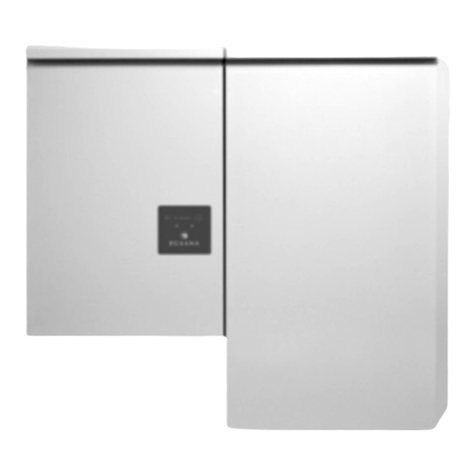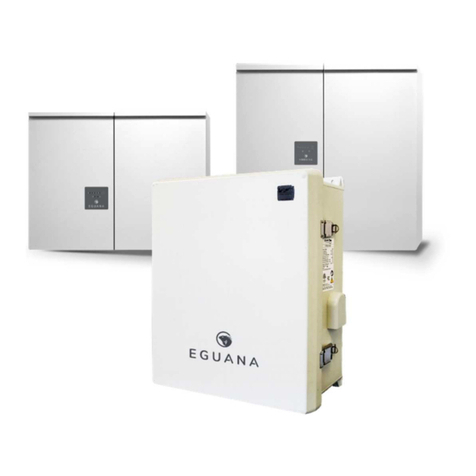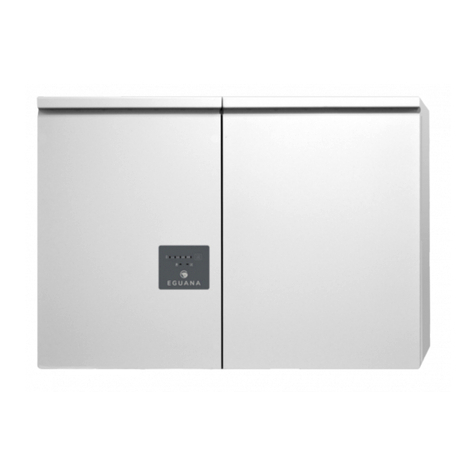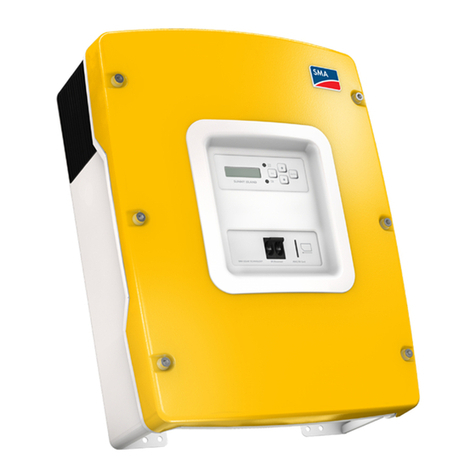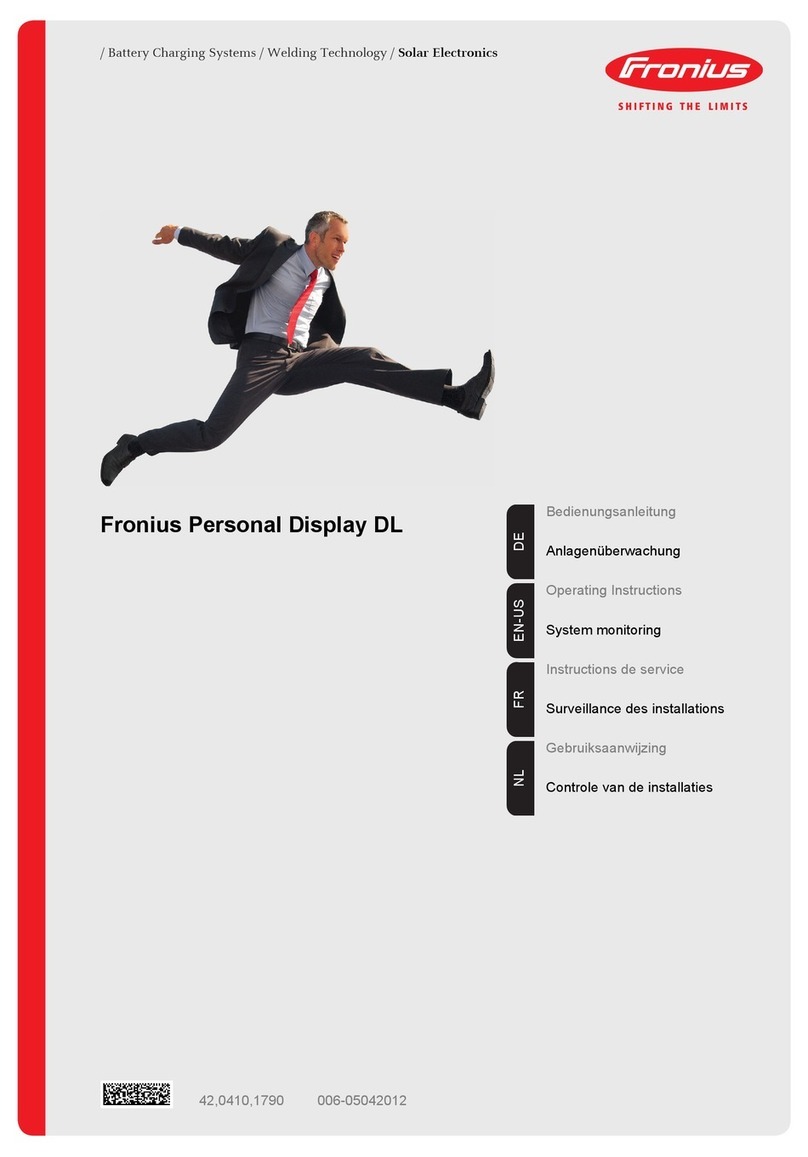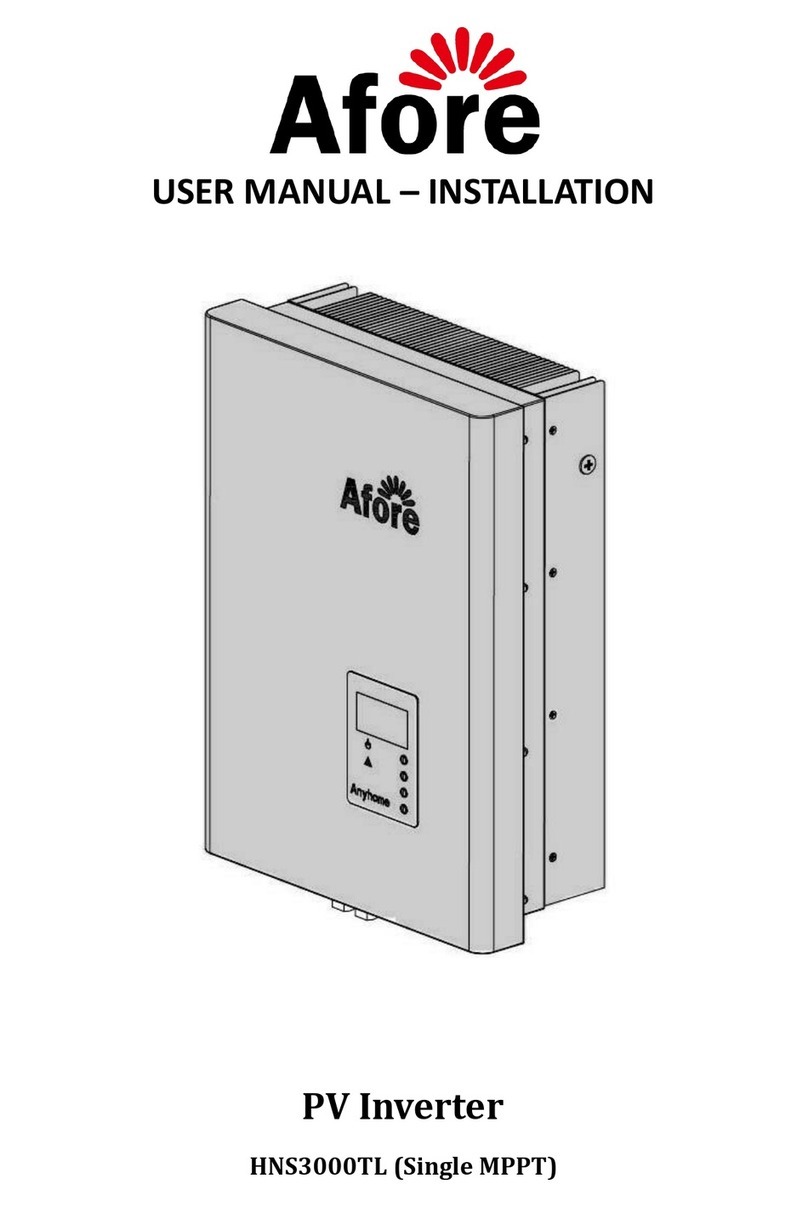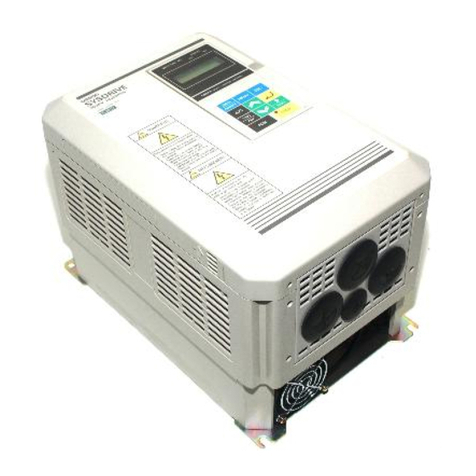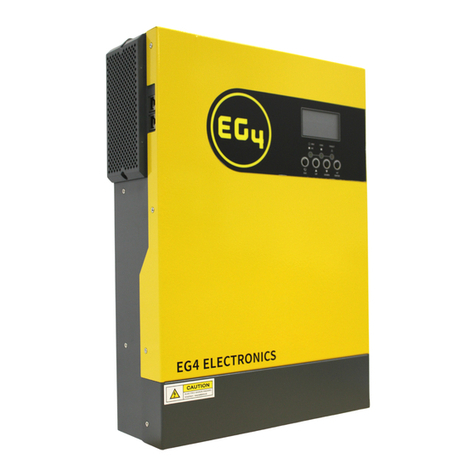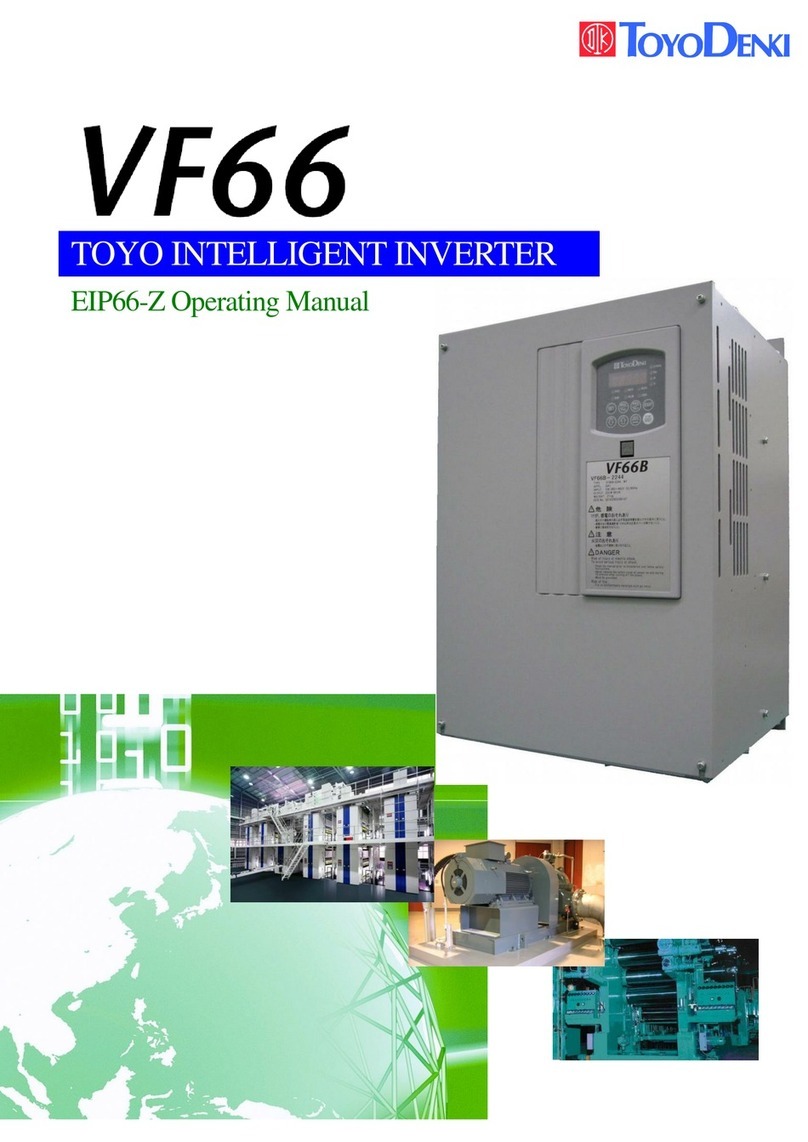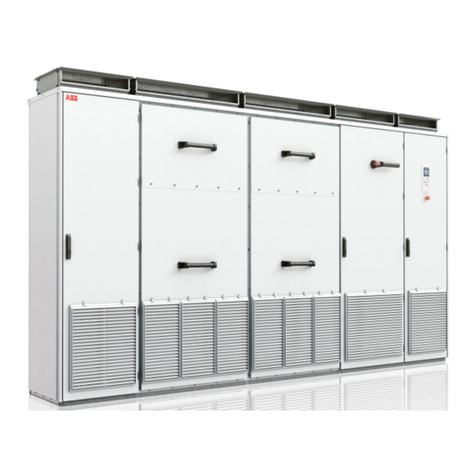Eguana Evolve ESS AU 13 Installation manual

Model
Evolve ESS AU – 13 kWh
Evolve ESS AU – 26 kWh
Evolve ESS AU – 39 kWh
Grid Support Utility Interactive Inverter
& Integrated Lithium Battery
For use only with battery model
•LG Chem EM048126P3S7
Installation & Start-up Guide

Revision History
Revision
Date
Status
Author
Comments
1.0
05.Oct.2022
Released
RWM
Initial release.

IMPORTANT SAFETY INSTRUCTIONS
SAVE THESE INSTRUCTIONS
This manual contains im ortant instructions for the Evolve™ Home Energy Storage System – including the
ower control system (PCS) and base model battery cabinet installation and o eration. This roduct is
ex andable with the addition of u to two more battery cabinets. The Eguana Evolve™ com onents described
by this manual are intended to be used as art of an Energy Storage system and installed as er the local
electrical code.
CAUTION: Hazardous Voltages! This inverter contains hazardous voltage and energy that may be
lethal. It may only be installed by qualified ersonnel who have read this manual and are familiar with
its o eration and hazards. The following safety rocedures should be followed:
Only connect the PCS cabinet to a com atible electrical service as defined in the model s ecifications. The PCS
must be connected to a dedicated branch circuit in the main electrical anel.
An external disconnect switch shall be rovided in the end installation by others for the AC Grid out ut circuit.
CAUTION! This equi ment contains high energy lithium batteries. Qualified and trained ersonnel should wear
rotective clothing and equi ment when working inside the battery cabinet and/or with battery
modules.
The PCS is com atible with the LG Chem battery model EM048126P3S7 only.
CAUTION! The batteries rovided with this system must be charged only by the PCS included as art of the
energy storage system. Do not attem t to charge batteries with any other charger device or connect
any devices directly to the DC battery bus.
Ensure ro er electrical grounding in accordance with code requirements.
Ensure ro er airflow ath for active cooling.
Never o erate system in a manner not described by this manual.
Only qualified ersonnel should service this roduct.
Ensure all covers are securely fastened after installation is com lete.
This roduct must be stored indoors in an environmentally conditioned location rior to installation, rotected
from rain and ex osure to any hazardous chemicals.
Do not attem t to o erate this roduct if there is any hysical evidence of damage to any of the cabinets or
internal com onents.
CAUTION! This equi ment is heavy. Mechanical lifts are recommended for safe installation.

Contents
1 SAFETY....................................................................................................................................................................... 1
1.1
I
N CASE OF EMERGENCY
.....................................................................................................................1
1.2
B
ATTERY MODULE SAFETY PRECAUTIONS
............................................................................................1
1.3
G
ENERAL SAFETY PRECAUTIONS
........................................................................................................2
1.4
E
NVIRONMENTAL
P
ROTECTION
...........................................................................................................2
2 INTRODUCTION ...................................................................................................................................................... 3
2.1
A
BOUT THIS
M
ANUAL
–
T
ARGET
A
UDIENCE
.........................................................................................3
2.2
G
LOSSARY
........................................................................................................................................3
2.3
I
NITIAL
I
NSPECTION OF
M
ATERIAL
L
IST
................................................................................................4
2.4
S
PECIAL
T
OOLS
&
H
ARDWARE
...........................................................................................................4
2.5
I
NVERTER
/DSP
F
IRMWARE
V
ERSION
..................................................................................................4
3 INSTA ATION SITE PREPARATION ............................................................................................................... 5
3.1
L
OCATING THE SYSTEM
......................................................................................................................5
3.2
I
NSTALLATION
A
REA
R
EQUIRED TO
W
ALL
M
OUNT
PCS
AND
B
ATTERY
:.................................................5
3.3
I
NSTALLATION PLAN
–
POWER AND COMMUNICATION CIRCUITS
..............................................................6
3.4
SLD
-
AC
C
OUPLED
PV
S
YSTEM WITH
B
ACK
-
UP
P
OWER
O
PERATION
..................................................7
4 PCS AND BATTERY CABINET WA -MOUNTING INSTRUCTIONS ...................................................... 8
5 PCS / BATTERY INTER-CABINET WIRING ................................................................................................... 10
5.1
B
ATTERY POWER CABLE CONNECTIONS
............................................................................................10
5.2
B
ATTERY
BMS
TO
PCS
COMMUNICATION CONNECTION
.....................................................................11
6 SYSTEM E ECTRICA WIRING ......................................................................................................................... 11
6.1
AC
POWER CONNECTIONS
................................................................................................................12
6.2
C
HASSIS
G
ROUNDING
......................................................................................................................13
7 ENERGY METER INSTA ATION ..................................................................................................................... 13
7.1
E
LECTRICAL CONNECTIONS
–
VOLTAGE MEASUREMENT
/
POWER SUPPLY
............................................13
7.2
CT
(
CURRENT TRANSFORMER
)
CONNECTIONS
...................................................................................13
7.3
RS-485
COMMUNICATION CONNECTION
............................................................................................14
8 DROP ET ETHERNET CONNECTION TO HOME ROUTER ....................................................................... 14
8.1
E
THERNET CABLE CONNECTION
........................................................................................................14
9 DRED DEVICE CONNECTION: (AUSTRA IA).............................................................................................. 14
10 START-UP SEQUENCE ..................................................................................................................................... 15
10.1
S
HUTDOWN
S
EQUENCE
..................................................................................................................16
11 OPERATION ......................................................................................................................................................... 16
11.1
U
PDATING THE
PCS
FACTORY REGIONAL SETTINGS
.........................................................................16
12 PCS DISP AY PANE ........................................................................................................................................ 17
12.1
LED
D
ISPLAY
I
NDICATORS
.............................................................................................................17
12.2
PCS
DISPLAY PANEL INDICATOR SUMMARY
. ....................................................................................17
12.3
S
ERVICE
B
UTTON
..........................................................................................................................17
12.4
B
ACKUP
P
OWER
O
PERATION
..........................................................................................................18
12.4.1 Backup Power Display Modes ................................................................................................................ 18
12.5
O
FF
-
GRID MODE
:
R
ESTARTING THE BATTERY SYSTEM AFTER LOW BATTERY SHUTDOWN
....................18
13 MAINTENANCE ................................................................................................................................................... 19
14 TROUB ESHOOTING ........................................................................................................................................ 19
15 SERVICEAB E PARTS – BATTERY MODU E REMOVA /REP ACEMENT ....................................... 19

16 TECHNICA DATA ............................................................................................................................................. 20
16.1
PCS
CABINET DATA
.......................................................................................................................20
16.2
B
ATTERY CABINET DATA
.................................................................................................................21
16.3
W
IRE AND TORQUE RATINGS
...........................................................................................................21
16.4
T
HERMAL PERFORMANCE
:
C
HARGE
/
D
ISCHARGE
C
URVES
..............................................................22
APPENDIX A: E ECTRICA B OCK DIAGRAM OF INTER-CABINET WIRING ....................................... 23
APPENDIX B: ENERGY METER WIRING DIAGRAMS ..................................................................................... 24
B.1
A
CCU
-E
NERGY
A
CUREV
1310 .........................................................................................................24
B.1.2(A) Main electrical panel meter C and power wiring. B.1.2(B) PV meter C and power
wiring............................................................................................................................................................................ 24
B.2
E
ASTRON
SDM630MCT-40
M
A.......................................................................................................25

1
1 Safety
Throughout this manual, the following symbols will be used to highlight im ortant information and rocedures:
Symbol
Definition
Symbol
Definition
WARNING! A dangerous voltage or
other condition exists. Use extreme
caution when performing these tasks.
Meter measurement required.
AUTION!
his information is critical to
the safe installation and or operation of
the inverter.
Follow these instructions closely.
Torque rating critical to o eration.
NOTE: his statement is important.
Follow instructions closely.
Login to the remote monitoring
system for o erating status
1.1 In case of emergency
In all cases:
If safe to do so, switch off the AC breakers (external to the system) for the system.
•
Contact the fire de artment or other required emergency res onse team.
•
Evacuate the area, and if a licable, follow your emergency evacuation lan if others are in roximity to
the installed location.
In case of fire:
•
When safe, use a fire extinguisher suitable for use; including A, B, and C dry chemical fire extinguishers
or carbon dioxide extinguishers.
In case of flooding
:
•
Stay out of water if any art of the system or wiring is submerged.
•
Do not attem t to o erate batteries that have been submerged in water even after they have been dried.
In case of unusual noise, smell or smoke:
•
If safe to do so, ventilate the area.
1.2 Battery module safety recautions
This roduct is integrated with LG Chem EM048126P3S7 series battery modules. Refer to the LG Chem roduct
manual LG Chem P3S series 48V Standalone Battery Module Installation Manual, for com lete safety instructions
regarding handling of battery modules.
EMS

2
1.3 General safety recautions
Important!
Installation, service, and o erating ersonnel must read this document in its entirety, and
observe all safety and installation rocedures as described in this manual. Never o erate system in a
manner not described by this manual.
Only qualified ersonnel should service this roduct.
Ensure all covers are securely fastened after installation is com lete.
Personal Protective Equi ment (PPE) in com liance with local work lace safety standards must be worn when
working inside the cabinet.
Risks of Fire
Do not ex ose the system to tem eratures exceeding 60 degrees Celsius.
Avoid installation in direct sunlight.
Do not store objects on to of the cabinet.
Do not obstruct the intake or exhaust of the forced airflow system.
Do not store combustible objects and corrosive chemicals directly adjacent to the system.
Risks of Shock
WARNING! Hazardous Voltages. The Inverter contains hazardous voltage and energy that
may be lethal
. It may only be installed by qualified ersonnel who have read this manual and are
familiar with its o eration and hazards.
Only connect this roduct to a com atible electrical service as defined in the model s ecifications.
This roduct must be connected to a dedicated branch circuit in the main electrical anel.
Ensure ro er electrical grounding in accordance with code requirements.
CAUTION! Both AC and DC voltage sources are terminated inside this product. Each circuit
must be individually disconnected before servicing.
Risks of Damage
This system is compatible with the G Chem battery model EM048126P3S7 only.
Do not
attem t to connect any other battery to the system.
Do not connect any other loads, charge controllers, or PV anels directly to the DC battery source.
Do not dro , ti , or uncture the cabinet during trans ort and installation. Visible damage to the
cabinet and/or internal com onents should be re orted to the manufacturer immediately.
Do not store this system for eriods longer than six months without a battery maintenance charge.
This may result in ermanent damage to the batteries.
1.4 Environmental Protection
Do not dis ose of the system or any of the com onents within the cabinet. Batteries, electronics,
cables, and metal arts are recyclable. Consult your munici al waste management authority to
determine required methods of com onent recycling.

3
2 Introduction
2.1 About this Manual – Target Audience
This manual is intended to be used by qualified service and installation ersonnel for the ur oses of roduct
installation. This roduct is ermanently wired to the home electrical service, and must be installed by a licensed
electrician only. This manual contains instructions for the installation and start u sequence of the Eguana Evolve™
home energy storage system; including the PCS and master battery cabinets, the energy meter, and Ethernet
connection to a customer su lied internet router.
IMPORTANT! This manual makes frequent references to a utility interactive solar PV system as art of an
AC cou led solar lus storage installation, which is inde endently su lied, installed, and o erated from
the Eguana Evolve ESS. It is the res onsibility of the installer to ensure that any utility interactive PV system
connected to a backu anel for micro-grid o eration is com atible for use with a grid-forming battery inverter.
The energy management system su lied with this roduct can monitor the AC ower out ut of an inde endently
installed utility interactive solar PV inverter to o erate energy savings algorithms a licable to the local electrical
utility; either via CT monitoring, or via com atible communication rotocols with a select list of PV inverter models.
Consult Eguana Technologies for the most recent list of PV inverters with direct communication to the energy
management system.
This roduct can su ly limited backu ower, and contains se arate grid and load orts to isolate backu loads
during a grid outage. When this roduct is not in service, backu loads are routed directly to the grid anel via the
internal PCS by ass relay.
The AC out ut of an inde endently installed utility interactive solar PV inverter can be wired to the backu anel
to su ort solar battery charging during backu o eration.
The battery ca acity of this system can be ex anded by adding additional cabinets adjacent to the master battery
cabinet. Ex ansion of battery ca acity is not covered within the sco e of this document.
2.2 Glossary
Term Definition Term Definition
AC Alternating Current GND Ground
ARC Auto Recovery Circuit LED Light Emitting Diode
AS/NZS
Standards Australia NC Normally Closed
CEC Clean Energy Council NO Normally O en
CPU Central Processing Unit PCS Power Control System (Inverter)
DC Direct Current PE Protective Earth
DRED Demand Res onse Enabling Device PV Photo-Voltaic
DRM Demand Res onse Mode RF Radio Frequency
EMS Energy Management System SOC State Of Charge (Battery)
ESD Electrostatic Discharge SOH State of Health (Battery)
ESS Energy Storage System

4
2.3 Initial Ins ection of Material List
The system com onents su lied with your Eguana Evolve™
Energy Storage system are shown below. Each
com onent should be ins ected visually for any damage that may have been caused by shi ment. If damage is
resent, lease contact your local distributor.
2.4 S ecial Tools & Hardware
In addition to standard tools, the following tools
and hardware should be readily available for the
installation.
•
Torque wrench
•
17mm socket wrench (battery negative
main ower connection).
•
10mm socket wrench (battery +/- module
ower connections).
•
3/8” socket wrench (battery ositive main
ower connection).
•
RJ-45 crim tool (EMS to PCS
communication cable) and RJ-45
connectors.
•
M8 mounting hardware for wall bracket
(load bearing).
2.5 Inverter/DSP Firmware Version
The Inverter/DSP firmware version is dis layed
within the equi ment device menu of the SwitchDin Smart Energy a lication, available both in IOS and
Android. O en the a lication, then roceed to:
Unit >> Equi ment (Devices) >> EguanaPCS >> Information: PCS. Field = Inverter/DSP Firmware version.
Item Description
1
ACB05-LP PCS cabinet
2
ACB05-LB Master battery cabinet
3
Energy meter
4
Current transformer(s)
5
Wall bracket
6
BMS
–
PCS high level communication
cable
7
PCS and battery cabinet levelling brackets
8
Cabinet cou ler lates
9
Cabinet cou ler gasket
Cabinet cou ler hardware (not shown)
4 ea M4 bolts
4 ea M4 star washers
4 ea M4 lock nuts
1
2
3
4
5
6
7
8
9
x2
x2
x3 (3
Ø)

5
3 Installation Site Preparation
Before installing the Evolve home energy storage com onents, read all instructions and warnings in this manual.
AUTION! All electrical installation work should be performed in accordance with local building and
electrical codes.
WARNING! Isolate the PCS from all energy sources prior to electrical installation by means of disconnects,
breakers or connectors. Failure to properly isolate either AC or DC sources may result in serious injury or
death. his system will generate an AC voltage at the off-grid terminals when DC source is applied.
AUTION! The P S cabinet weighs up to 65 kg, and the battery cabinet weighs up to 102 kg. Handle
with care.
The wall must be load-bearing rated according to the local building code. Mechanical lifts are
recommended to osition cabinets on the wall bracket.
3.1 Locating the system
1. The installation location must com ly with the environmental rating of the roduct. Refer to the
environmental ratings in section 16.2 of this manual.
CAU ION! Do not install in direct sunlight. Battery performance is dependent upon operating ambient
temperature. Radiant heat absorbed in direct sunlight will greatly reduce the performance of the
battery, and will prematurely cause degradation of the display indicator panel on the P S cabinet. he battery
modules are rated for full power operation between -10C to +45C.
2. The forced air cooling of the PCS cabinet is from bottom to to . Refer to figure 1 for recommended layout
lan.
3. All inter-cabinet cabling is limited in length. Se arating cabinets is not ermitted.
4. Wall mounting hardware not included. The load-bearing wall bracket is rovisioned for M8 hardware.
Levelling brackets are rovisioned for M5 hardware.
3.2 Installation Area Required to Wall Mount PCS and Battery:
The hysical installation of the cabinets requires the layout lanning and installation of the system com onents in
the available installation s ace. The recommended installation height is driven by the viewing angle of the dis lay
anel on the PCS cabinet.
Figure
1
: Installation clearances.

6
3.3 Installation lan – ower and communication circuits
The following exam le outlines the conduit lan for ower and communication circuits for the battery system. In
this exam le, the PV inverter is cou led to a backu ower sub- anel. The sub- anel may also be an isolated
ower bus within the main electrical anel.
NOTES:
1- The battery system is rated 5 kVA maximum. Solar self consum tion revents battery ower ex ort,
however, the grid ower circuit must electrically accommodate the total of both battery and PV
generation when PV is connected to the backu circuit.
2- The exam le above is shown with the energy meter relocated from the PCS to the main electrical anel.
For installations where the energy meter is located within the PCS, the CT (current) and voltage sense
wiring must be routed from the utility side of the electrical anel to the energy meter in uts as shown in
section 3.4 and A endix B.
Signal
Definition
Rating
P1
Grid ower
-1
10 kVA max (5 kVA battery + 5 kVA PV), 230 Vac,
1
Ø
P2
Backu ower
5 kVA max, 230 Vac,
1
Ø only
P3
PV ower (AC), cou led to backu
5 kVA
max, AC, 1
Ø only
P4
Home load circuits
, backu ower
16 A / 230 Vac,
1
Ø only
S1
Energy meter (RS
-
485)
CAT
-
5, STP
S2
DRED device, Ethernet
CAT
-
5, UTP
S3
Home router, Ethernet
CAT
-
5, UTP
Figure
2
: Installation plan.

7
3.4 SLD - AC Cou led PV System with Back-u Power O eration
The single line diagram shown below is a re resentation of a ty ical installation configured for utility interactive
and back-u ower o eration, with AC cou led PV connected to a critical load anel. This drawing is a guideline
only, and is not a substitute for a code com liant installation. All com onents required for a code com liant
installation are the res onsibility of the licensed installer, including any additional circuit rotection requirements
not shown here.
NOTES
1. The backu ower bus must be electrically isolated from the main electrical bus. Do not ta the neutral wires of the main
and backu buses. A se arate line, neutral, and ground must be run to each of the load and grid orts of the battery
system. Refer to the installation manual for wiring details.
2. Energy meter su orts 1Ø and 3Ø configuration.
3. 3Ø service shown. For 1Ø service, do not o ulate R,S h com onents.
4. The battery system must be earth bonded to the building ground to meet lightning rotection requirements.
5. The battery system load and grid orts are inde endently controlled circuits. Should the electrical code require additional
“line-of-sight” disconnects, a se arate disconnect must be used for each of the grid and load orts. The disconnects
and/or circuit breakers must o erate inde endently of each other, and not be ganged.
6. The PCS rovides galvanic se aration of AC and DC sources. Overcurrent rotection devices, RCD Ty e A (300 mA), are
sufficient for rotection of both AC Grid and AC load orts.
7. Total AC name late of PV not to exceed 5 kW. String inverter shown for sim licity. Multi le AC strings of micro-
inverters ermitted. Any additional PV installed on the grid side of the battery system o erates inde endently from the
battery system, and is only limited by the interconnection requirements of the utility service rovider.
8. The maximum conductor size ermitted for the PCS grid ort is 16 mm
2
, and maximum breaker rating of 63 Am to
rotect the internal circuits of the PCS. The ESS breaker rating and conductor size can be reduced, however, these
arameters are subject to the total ossible continuous out ut current of combined PV and ESS generation at the ESS
grid breaker in the main electrical anel. Variables that determine conductor sizing include; PV continuous out ut current
rating connected to the ESS load terminal, total self-su ly current to the main electrical anel (load connected PV lus
ESS out ut), and length of run from the ESS grid ort to the main electrical anel (voltage dro ). Conductor sizing is the
res onsibility of the installer as er the actual installation, com liant to local / national electrical codes. Refer to the
technical data in section 16.1 for Maximum AC fault current and duration (short circuit).
9. The PCS short circuit withstand ca acity is rated at 10 kA (1 second). Circuit rotection must not exceed this rating.
*DRED: Australia only.
**
See note 8.
**
See
note 9
.
N L1
L
2
L
3
Main Bus3
M
Emergency switching device
Figure
3
:
Singl
e Line Diagram: ypical AC coupled PV system.

8
4 PCS and Battery Cabinet Wall-Mounting Instructions
1. Mount the wall bracket to the wall. Use the
available slot attern to mount to a load-bearing
structure rated for the weight of the final system.
The slots accommodate a M8 bolt diameter.
IMPORTANT! Wall-stud mounting: A
minimum of three wall studs spanned within
the width of the mounting bracket are required. A
minimum of two mounting bolts are required per stud
(top/bottom).
2. Remove the master battery cabinet from the
ackaging, and stand the cabinet u right. (not
shown). Remove the front cover.
3. Assemble the lower leveling bracket. (Fully
assembled drawing shown – the last washer and
wing nut are mounted from inside the cabinet).
4. Mount the leveling bracket to the cabinet.
CAUTION!
Battery cabinet is heavy.
Mechanical lift recommended.
5. Lift the battery cabinet onto the wall mount
bracket, aligning the wall hooks at the rear of the
cabinet with the slots on the load-bearing face of
the bracket.
6. Slide the battery cabinet towards the right end of
the bracket to allow for clearance for the PCS
cabinet.
7. From the rear side of the cabinet, s in the lower
levelling bracket (in/out) until the cabinet is
vertically lumb (level) to the wall.
8. Remove the PCS cabinet from its ackaging and
stand u right. (not shown). Remove the front
cover.
9. Assemble and mount the leveling bracket as shown
in ste s 3 and 4 above.
Alignment
tab
Cabinet
mounting slot
Wall
mount
1
3
4
7
5
6
Figure
4
: Wall mount bracket and battery cabinet
installation.

9
CAUTION!
The PCS cabinet is heavy.
Mechanical lift recommended.
10. Lift the PCS cabinet onto the wall mounting
bracket.
11. Slide the PCS cabinet to the left such that it
aligns with the alignment tab on the
mounting bracket.
12. From the rear side of the cabinet, s in the
lower levelling bracket (in/out) until the
cabinet is vertically lumb (level) to the wall
(as shown in ste 7).
WARNING! The mounting bolts of the
flange assembly are required to be fully
secured to provide the chassis
grounding for the battery cabinet. orque nuts
as specified in the specification tables provided in
this manual.
13. Insert the PCS cabinet cou ling gasket
between the two cabinets (lower-front).
Slide the battery cabinet towards the left
until mating to the gasket.
14. Place the cou ling late inside the PCS
cabinet and insert the four mounting bolts
and washers through to the battery cabinet
side.
15. Place star washers on the bolts on the
battery side of the cabinet.
16. Mount the battery cabinet side cou ling
late, and fasten with the lock nuts.
17.
Continuity test:
Check the
continuity between the cabinets using an
Ohm meter. The test reading must be
zero Ohms at a bare metal oint inside each
of the PCS and battery cabinets.
18. O tional: (This is not a load bearing anchor –
anchored conduit runs to the PCS are
satisfactory). Install screws in leveling lates
for PCS and battery cabinets by inserting a
screwdriver through the hole on the backside of
the cabinets.
19. Plug hole on back of cabinet using by inserting the hole lug from the front side.
10
11
13
14
15
16
18
19
Figure
5
: PCS cabi
net installation and inter
-
cabinet
coupler assembly.

10
5 PCS / Battery Inter-Cabinet
Wiring
The following instructions cover the interconnection
wiring of the PCS and master battery cabinet. No
cable re aration is required with battery modules
re-installed in the cabinet. Refer to a endix A for a
com lete inter-cabinet wiring diagram.
Note: Overcurrent protection of the DC
source is provided internally as part of the
integrated battery system. No external DC
disconnect is required.
5.1 Battery ower cable connections
CAUTION!
A torque wrench is required to
ensure the power cables are terminated to
their specifications.
Over-torque can
damage the DC breaker and/or stri the threads on the
co er bus bar osts. Under-torque can result in an
arc fault hazard, and risk of fire. Damage as a result of
im ro er termination is not covered by the
manufacturer warranty.
1. Remove the lastic safety barrier on the ower
anel assembly inside the master battery cabinet
by removing the three white lastic lug nuts on
the to of the safety barrier.
2. Route the battery cables from the PCS cabinet to
the battery cabinet.
3. Loosen the PCS DC- terminal bolt using a 17mm
socket wrench. Remove the ground cable.
4. Place the DC- cable and ground cable ring
terminals back-to-back, and mount them to the
PCS DC- bus bar. Tighten the bolt using the
17mm socket. Torque to 6.8 Nm.
5. Connect the Battery ositive (+) cable to the PCS Batt+ bus bar terminal on the rear of the battery disconnect
switch using a 3/8” socket wrench. Torque to 4.0 Nm.
PCS
GN
1
2
3
4
5
Plastic barrier
Figure
6
: Battery power cable installation.

11
5.2 Battery BMS to PCS communication connection
The communication cable can be routed with DC ower cables. Take care that the communication cable is
routed through the inter-cabinet cou ler so that there is no stress or tension on the terminations. This cable is
terminated with RJ-50, 10- in connectors.
1. PCS cabinet: Terminate the cable ( /n 801003338) at the
BMS CAN
ort, as shown in figure 7, above-
left.
2. Battery cabinet: Terminate the cable at the rear battery module BMS ort as shown above-right.
6 System Electrical Wiring
Note:
This roduct is ca able of roviding utility interactive and islanded back u ower, and can be
AC cou led to a utility interactive hotovoltaic inverter. Wiring methods must be in accordance with
local electrical codes. The installer is res onsible for ensuring that over-current rotection is installed
and sized a ro riately for the AC grid and off-grid out ut circuits, in accordance with the AS/NSZ electrical code.
All field wiring connections to the battery system are at the PCS
cabinet only. The diagram (left) indicates the knockout locations for
conduit entry into the PCS; categorized as AC ower and signal level
circuits.
IMPORTANT!
Drilling holes anywhere in the battery or
PCS cabinet renders the warranty null and void.
Use the
knockouts rovided at the bottom face of the PCS cabinet only! Do
not drill holes anywhere in the battery system. Use conduit fitting
reducers, if a licable.
PCS cabinet – bottom
view
BMS CAN ort
Figure
7
:
PCS to BMS communication wiring.
Figure
8
: PCS knockout pattern.

12
6.1 AC ower connections
This battery system contains two inde endent AC ower connection orts; one ort dedicated for an electrical
utility connection, marked “AC Grid”, the other ort dedicated for backu o eration, marked “AC load”. This
roduct’s rimary a lication is intended for utility interconnection, and must be connected to a utility electrical
service su lying single hase 230 Vac / 50 Hz. The backu o eration of this roduct is a secondary a lication,
and is intended to su ly emergency backu o eration only. Under no circumstances should this roduct be used
solely as an off-grid storage system, nor should it be ex ected to erform whole home emergency backu ower.
Note: The PCS provides galvanic
separation between AC and DC
Sources.
RCD rotective devices of Ty e A are
sufficient for use as circuit over-current rotection
for both AC Grid and AC Load orts.
AUTION! To reduce the risk of fire,
connect only to a dedicated circuit
provided with appropriate branch circuit over-
current protection in accordance with local
electrical codes.
WARNING! Improper connection of the
wiring panel may result in equipment
damage and cause personal injury. Disconnect all
AC and DC Sources prior to installation.
AUTION! The A grid and load ports
are independent circuits, controlled internally by
an automatic bypass and transfer switch. Each
port must be connected to electrically isolated
panels. apping line or neutral wires from the
main electrical panel to the backup panel will result
in permanent damage to the product. Neutral
continuity is maintained internal to the PCS.
1.
AC Grid Port:
O en the s ring clam
terminals on the AC circuit board at the ort
marked “AC Grid”.
2. Terminate the AC grid connection wires as
follows: “L_Grid” = Line, “N_Grid” = Neutral,
and “PE” = Ground
3. Close the s ring clam terminals, ensuring
levers are fully engaged.
4.
AC oad Port:
O en the s ring clam
terminals on the AC circuit board at the ort
marked “AC Load”.
5. Terminate the wires at “L_AC load” (Line), “N_AC load” (neutral), and “PE_AC load” ( rotective earth).
6. Close the s ring clam terminals, ensuring levers are fully engaged.
Figure
9
: Wiring the PCS AC grid and load ports.

13
6.2 Chassis Grounding
In this section, “Chassis Ground” is referred to as “ground” or “grounding” unless otherwise mentioned.
The PCS cabinet is shi ed with ungrounded DC ower terminals within the inverter. When terminated to the
batteries, the DC bus is configured for DC negative to ground.
AC Grid Earthing System: The AC ower grounding is achieved through the PE terminals of the AC grid connectors
on the AC Filter Board, as shown in section 6.1. The PCS is configured by default for a TN earthing system.
Note: The field ground wire rating applies to the AC circuit only
. The DC source loo is internal to the battery
cabinet, and is rated accordingly.
DC ground fault monitoring: The Evolve BESS rovides integrated DC earth fault monitoring, and rovides
indication on the PCS anel as shown in section 12.2.
Lightning Grounding: The inverter has built-in lightning rotection. In order for the lightning rotection to be
effective, the grounding for lightning currents must be rovided via low im edance ath from the PCS PE terminal
to the building Ground/Earthing oint.
7 Energy meter installation
The energy management system’s solar self-consum tion algorithm requires the connection of an energy meter at
the customer’s main electrical anel. The meter must be installed and configured according to the electrical service;
either single hase or three hase. The information covered in this guide is generic to the a roved list of
integrated energy meters that are su orted by the home storage system at the time of your urchase. Refer to
the energy meter manufacturer’s installation manual su lied with your system for full installation details and
safety information.
Note: Refer to Appendix B for wiring diagrams specific to the manufacturer and model of the energy
meter supplied with your system.
The energy meter is su lied inside the PCS cabinet. It can be relocated within or adjacent to the main electrical
anel to sim lify the current and voltage wiring. Energy meters su lied with the home storage system are DIN
rail mounted. Use existing DIN rail s ace within the electrical anel, or add DIN rail as required.
7.1 Electrical connections – voltage measurement / ower su ly
The energy meter rovided is line owered from the electrical service. An in-line fuse, rated 1 Am / 250 VAC, is
required on the voltage line in ut to the meter. For three hase service, fuses are required on the V1, V2, and V3
in ut terminals. The voltage in uts can be connected anywhere on the customer side of the main service disconnect
breaker. For three hase systems, hase rotation is automatically configured by the meter.
7.2 CT (current transformer) connections
Note: Observe the current flow direction of the CT. The direction of flow must be away from the utility
meter. For three hase systems, hase rotation is automatically configured by the meter.
CAUTION! Handle CTs with care. Always terminate the CTs at the meter in uts rior to clam ing the
core onto a hot wire.

14
This system is su lied with s lit-core CTs for installation
without interru tion to the electrical service. The CTs must be
mounted on the rimary electrical bus, between the main
service breaker disconnect and the utility’s energy meter. This
is im ortant to ensure all loads and generation are ca tured for
o timum erformance of the solar self consum tion control
algorithms.
7.3 RS-485 communication connection
The battery system communicates with the meter using the
Modbus rotocol over an RS-485 network. Shielded twisted
air cable is required.
Note: Shield wire connected to earthing terminal at a
single oint only. Terminate the cable as shown
(TIA/EIA 568B standard):
Signal
RJ
-
45 Pin
Wire color
G
ND
3
green/white
A
4
blue
B
5
blue/white
8 Droplet Ethernet connection to Home Router
sA Wi-Fi connection to the battery system is ermitted for remote monitoring of the system, however, a ermanent
connection is strongly recommended for reliable communication access to the system. The Ethernet wiring from
the battery system must be connected to a customer su lied router. A ermanent Ethernet connection to the
battery system requires external wiring. Com liance with local
electrical code is the res onsibility of the installer. Conduit and
fittings connected to this equi ment must ensure com liance with
the IEC environmental rating as er the equi ment ratings.
8.1 Ethernet cable connection
The Ethernet connection is a standard RJ-45 straight through
configuration. Standard EIA/TIA termination ractices are
recommended.
1. Remove the knockout dedicated for the Ethernet connection.
2. Secure the communication cable strain relief (conduit fitting, if
a licable).
3. Terminate the routed cable as a straight-through Ethernet
connection.
4. Test the cable rior to connection.
5. Connect the cable to the Dro let’s Ethernet ort as shown.
9 DRED Device Connection: (Australia)
1. Connect the DRED device to the DRM Port at as shown.
Ethernet
1
Figure
11
: Droplet Ethernet connection.
Energy meter input
Figure
10
: Meter comunication connection.
Figure
12
: DRED device connection.

15
10 Start-up Sequence
CAUTION!
Powering the Evolve home energy storage system requires a s ecific start-u rocedure.
Please follow the ste s below.
CAUTION!
If the battery disconnect has been laced in the OFF osition at any time during o eration,
wait one minute before returning to the ON osition. Ra id cycling (less than one minute) of the battery
disconnect can cause damage to the re-charge circuit.
CAUTION!
During the first start-u sequence after installation, the battery modules may require a
battery maintenance cycle to balance the SOC. This maintenance cycle requires a grid connection so that
the PCS can be commanded to charge the batteries. The PCS battery SOC alarm light will flash yellow if
maintenance and/or other battery faults are resent. This rocedure may take from a few minutes to a few
hours, de ending on the difference in battery module SOC. Please refer to the PCS Service Manual for more
information.
1. Remove the front cover from the battery cabinet
adjacent to the PCS cabinet.
2. Press the [Power] button (see above, label #8) on the
master battery module. The master battery module has
communication wired from the battery BMS ort (label
#4) to the PCS [BMS in] ort.
WARNING! When the batteries are turned ON, the
battery voltage will be resent at the ower anel
assembly bus bar where the battery modules are terminated.
his step may take up to one minute.
Verify that the indicators are as shown in “Normal O eration”
as shown below.
Battery Power Button
Operation
WARNING!
The master battery
turns on all other battery modules in the
battery rack via the communication
network. Do not use ower buttons to
turn each module on individually. This
may cause damage to one or more
batteries on the DC bus.
Turn Batteries ON:
Press and
Release the ower button on the module
designated as the Master module (PCS
connected com cable).
Turn Batteries OFF:
Press and hold
5 seconds the ower button of any
module designated as a Slave Module. If
all modules do not shut off, re eat
individually for each module.
Figure
13
: Battery module feature list.
This manual suits for next models
2
Table of contents
Other Eguana Inverter manuals
Popular Inverter manuals by other brands
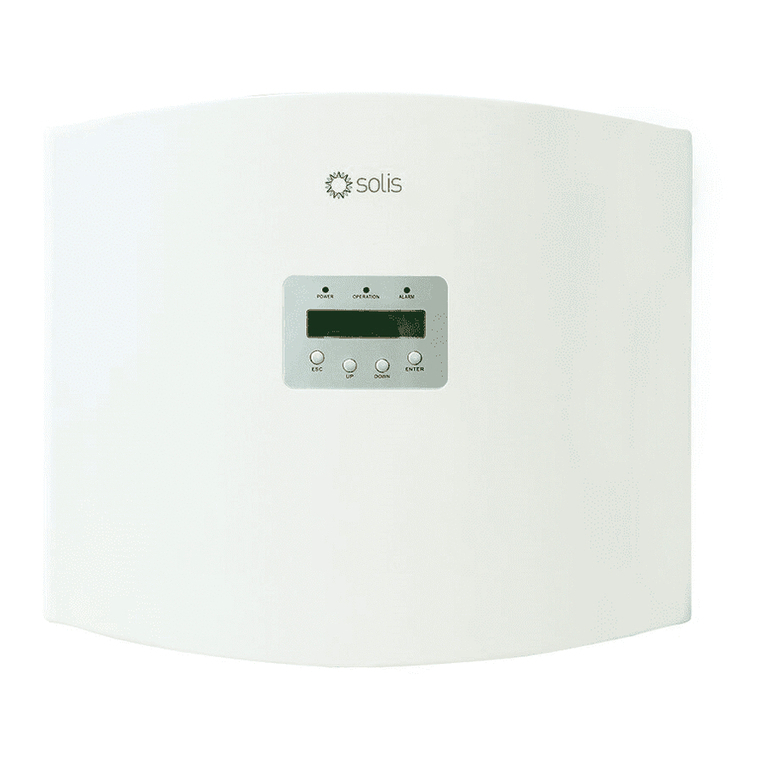
SOLIS
SOLIS Solis-EPM3-5G-Plus Quick installation instructions
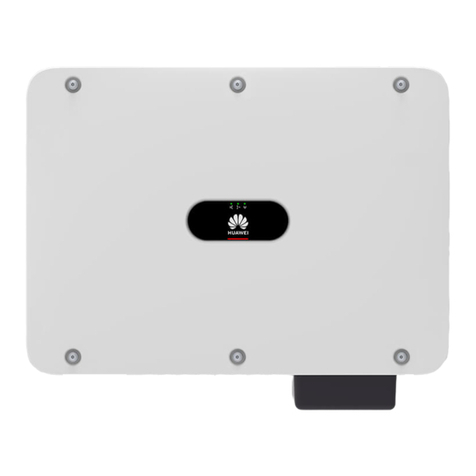
Huawei
Huawei SUN2000-50KTL-ZHM3 user manual
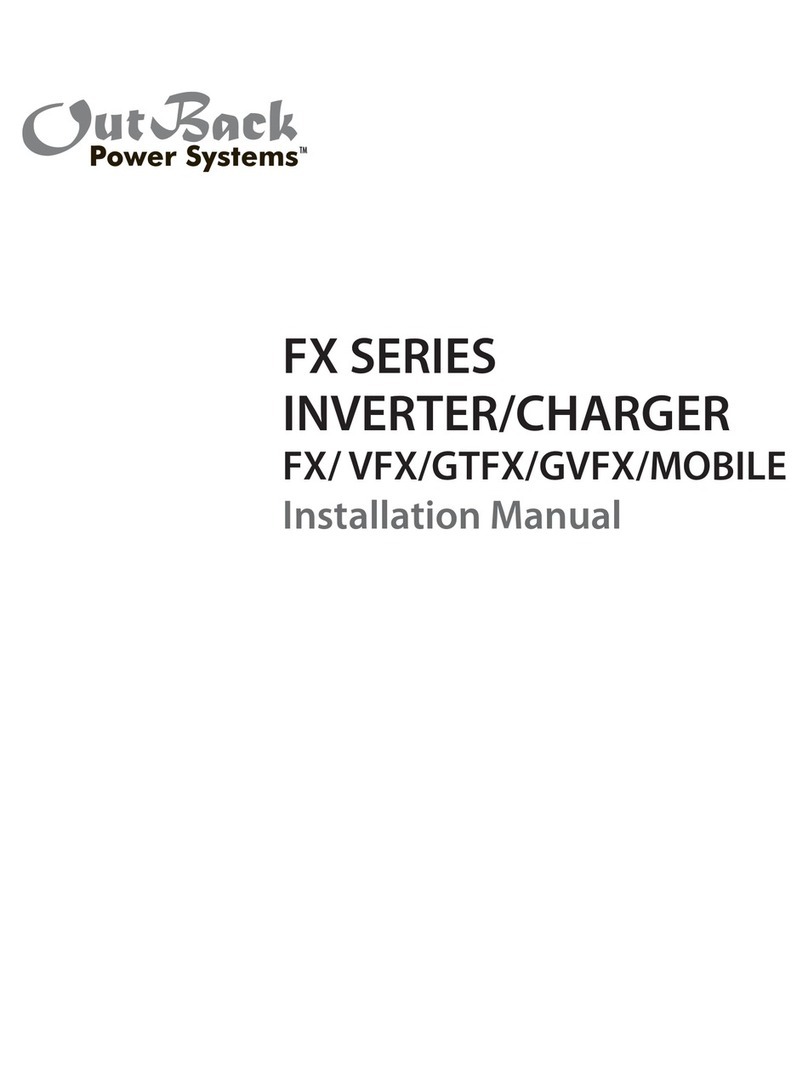
Outback Power Systems
Outback Power Systems FX Series installation manual
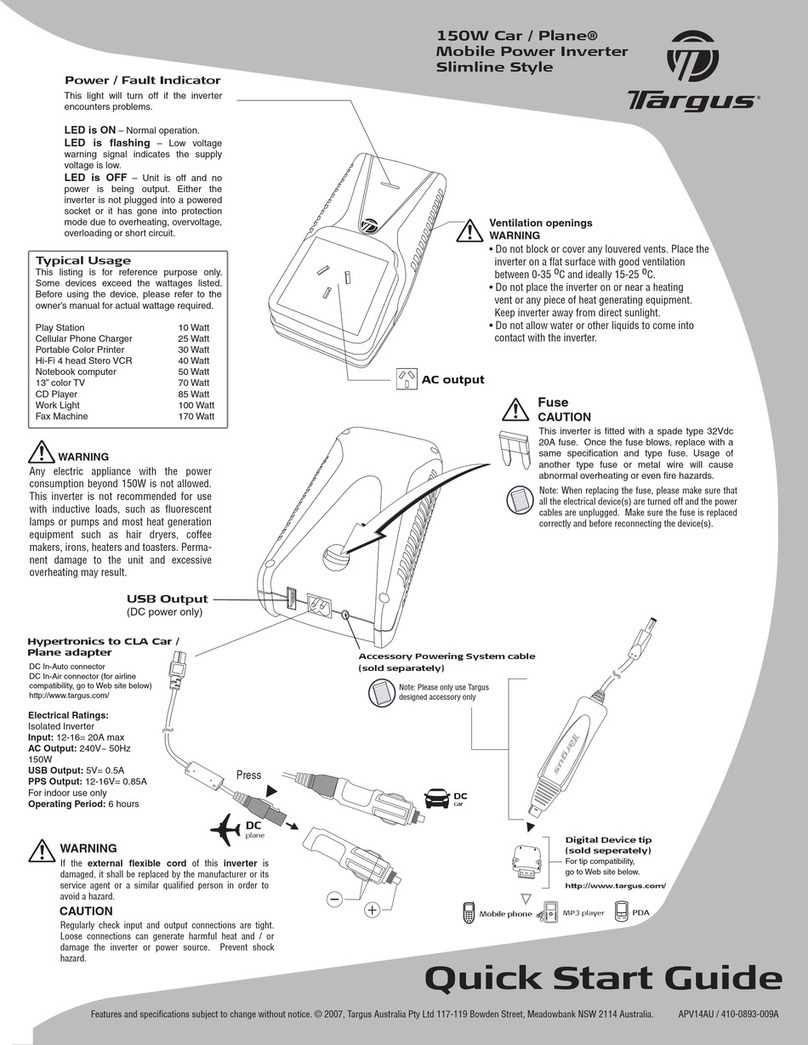
Targus
Targus APV14AU quick start guide

Xantrex
Xantrex XPower 175 PLUS owner's manual
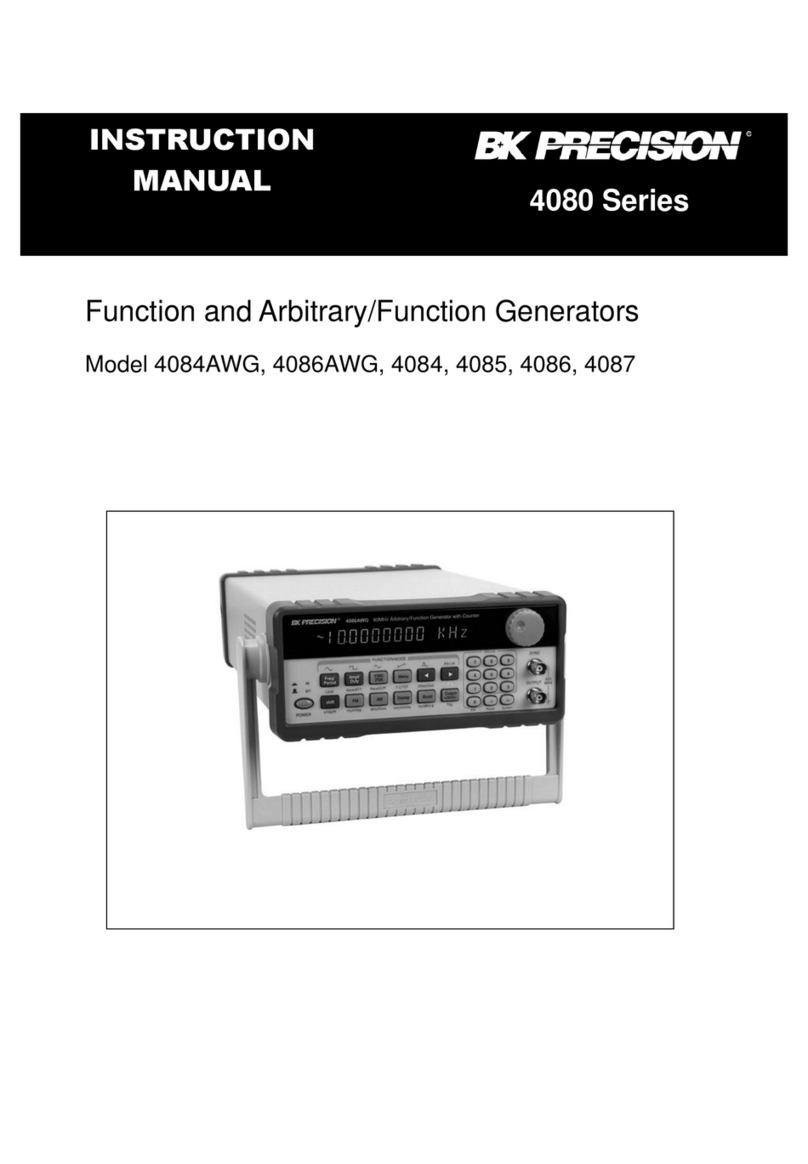
B+K precision
B+K precision 4084AWG instruction manual

